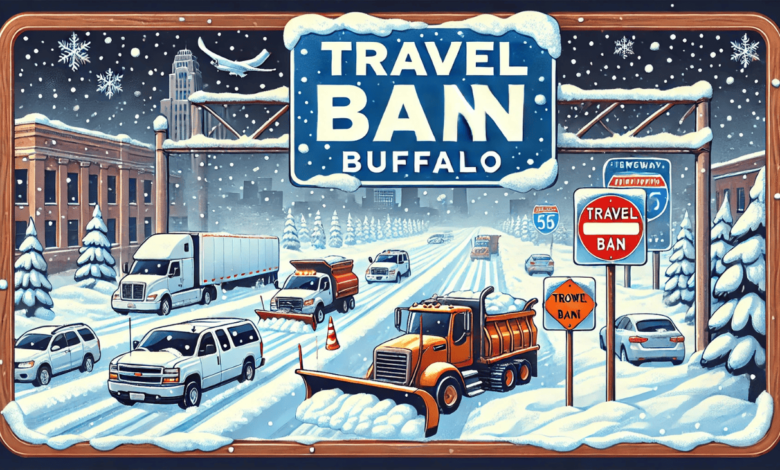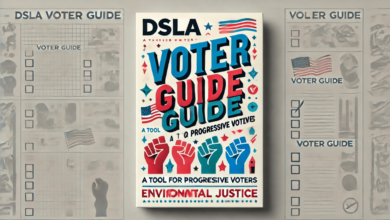Travel Ban Buffalo: A Necessary Measure for Public Safety Amid Severe Weather

Buffalo, New York, is no stranger to harsh winters, often facing snowstorms, freezing rain, and lake-effect snow that can quickly lead to dangerous driving conditions. In the event of a significant snowstorm, city officials may implement a travel ban to protect the public and minimize accidents. These travel restrictions are essential during extreme weather events, ensuring that the roads are clear for emergency personnel, snowplows, and other essential services.
A travel ban in Buffalo can affect certain parts of the city, particularly areas known for their high snow accumulation. For instance, neighborhoods like South Buffalo, Kaiser town, and Lovejoy have seen bans implemented when blizzards cause snowdrifts and zero visibility. These travel bans aim to prevent vehicles from getting stuck in heavy snow or causing collisions, allowing the authorities to restore order and safety on the roads.
Understanding a Travel Ban in Buffalo
A travel ban in Buffalo isn’t just a casual recommendation—it is a legally enforced restriction placed by local authorities, such as the mayor or the police department, to prevent non-essential driving. The city’s severe weather conditions, particularly during lake-effect snow events, can quickly overwhelm residents and visitors, so a travel ban is a precautionary measure designed to keep everyone safe.
For example, during a particularly brutal snowstorm in January 2024, a travel ban was put into effect for South Buffalo and other neighborhoods south of Broadway. This was due to heavy snow and reduced visibility, which made driving extremely hazardous. Officials also closed off key highways and the Skyway to ensure that only essential vehicles, such as emergency responders and snow removal crews, could travel freely.
The Importance of the Travel Ban Buffalo During Snowstorms
When a travel ban is issued in Buffalo, it is more than just an inconvenience—it is a critical safety measure. The combination of lake-effect snow and high winds often leads to whiteout conditions, making it nearly impossible to drive safely. The snow can accumulate rapidly, covering road signs, traffic lights, and even road markings, leaving drivers with little to no visibility.
By enforcing a travel ban, local authorities are ensuring that the general public doesn’t get caught in these dangerous conditions. Even a minor vehicle accident can lead to serious delays in clearing snow from the streets. In the worst-case scenario, the snowstorm could trap drivers in the middle of dangerous intersections or highways, blocking access for emergency services.
What Happens During a Travel Ban Buffalo?
Once a travel ban is announced in Buffalo, all non-essential traffic is prohibited in certain areas. This includes commuters, tourists, and anyone who doesn’t need to be on the roads for work or emergency purposes. Only emergency vehicles, snowplows, and other critical personnel are allowed to move freely. Drivers found violating the ban may be fined or ticketed, and vehicles can be towed if they obstruct snow-clearing efforts or pose a danger to other drivers.
The goal of the travel ban is not just to prevent accidents but also to allow snow removal crews to work effectively. When the streets are empty, these workers can clear the snow without obstruction, making it safer for everyone once the ban is lifted.
How Long Does a Travel Ban Last in Buffalo?
A travel ban in Buffalo typically lasts for the duration of the most intense weather conditions. Once the snowstorm or blizzard subsides, and the roads have been cleared enough for safe travel, the ban may be lifted. However, a travel advisory often remains in place for a while, urging residents to be cautious if they must drive. These advisories remind the public that roads may still be slippery or covered with patches of ice.
For instance, after the snowstorm in January 2024, the travel ban was lifted in South Buffalo, but the city continued to monitor road conditions closely. The National Weather Service issued warnings about ongoing lake-effect snow and advised that driving should still be limited to essential travel only.
Why Buffalo Needs Travel Bans
Buffalo’s geography and climate make it particularly vulnerable to severe weather events. The city sits on the shores of Lake Erie, which contributes to the frequent lake-effect snow that can quickly blanket the region. Unlike other cities, Buffalo’s snowstorms can develop suddenly, dumping several inches of snow within a few hours. With such unpredictable weather, travel bans are a necessary tool to protect both residents and visitors.
Additionally, the city’s infrastructure is not always equipped to handle massive snowstorms. Snowplows and salt trucks can work more efficiently when roads are clear of civilian traffic, ensuring that critical routes are opened up as quickly as possible.
The Aftermath of a Travel Ban Buffalo
Once the travel ban has been lifted and conditions improve, it’s crucial for residents to remain cautious. Though the streets may look clear, there could still be hidden patches of ice, especially on overpasses or bridges. The travel advisory issued after the ban acts as a reminder to stay vigilant while driving and to avoid unnecessary trips.
Buffalo residents are accustomed to the challenges of winter weather, but during times of extreme storms, it’s always better to err on the side of caution. Understanding and respecting the travel ban helps keep everyone safe during the winter months.
Conclusion
In conclusion, a travel ban buffalo is a vital tool used by local authorities to protect the public during severe weather events, particularly snowstorms and lake-effect snow. By restricting non-essential travel, officials help ensure that roads are cleared quickly, emergency services can respond to incidents, and drivers are kept safe. While these bans can be inconvenient, they are ultimately in place for the safety and well-being of everyone in Buffalo.
Next time a travel ban is announced, residents should take it seriously, stay off the roads unless necessary, and follow any advisories issued by local authorities. Only then can Buffalo weather the harsh winter storms safely and efficiently.



